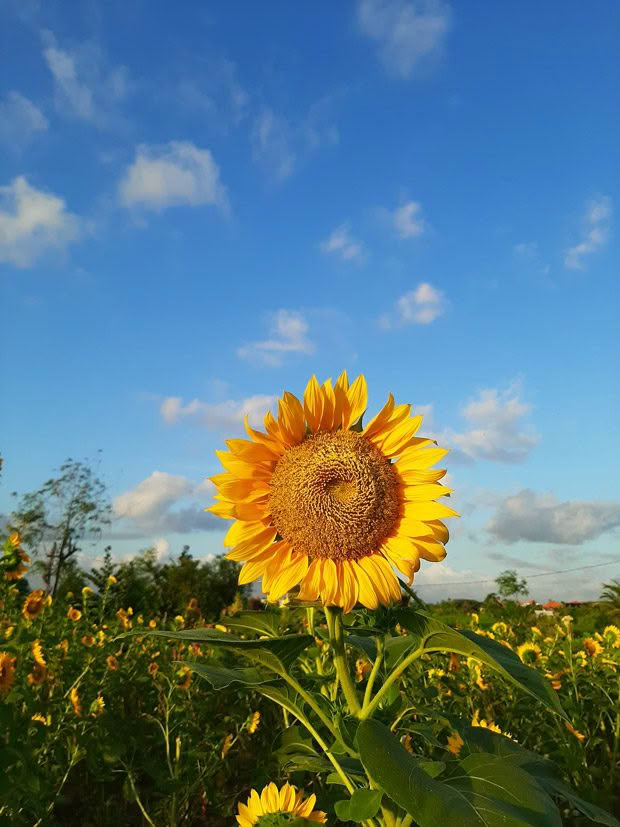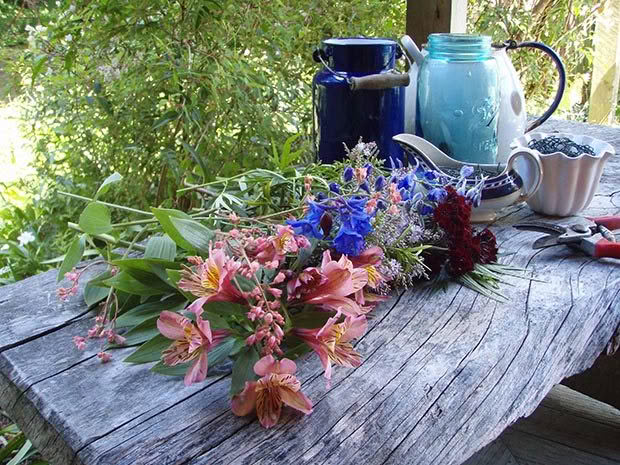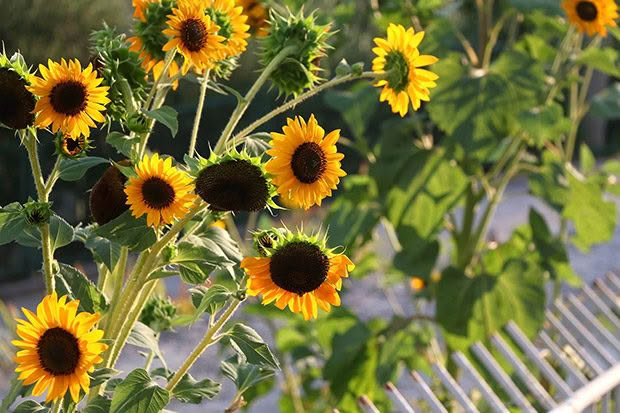How to grow sunflowers in New Zealand

Jane plants one of her favourite and most useful flowers.
Words: Jane Bellerby
Radiant sunflowers give you so much pleasure and then become food for you and your chooks. They are an instant summer hit with their bright sunny faces and fantastic height.
• Sunflowers can be planted any time from September
• They like a well fed loamy soil but are not too fussy so long as there is plenty of fertility and moisture.
• I know it’s possible to grow dwarf ones but the traditionalist and sensationalist in me likes Russian Giants and they look fabulous in any garden.
• A fence or wall makes a good backdrop and they certainly need some kind of support against wind and rain.
• Another option is to plant them in circles and then tie the stems together so they can be mutually supportive.
• The young leaves of sunflowers are good in salads, the petals can be used as a dye, bees come buzzing in for the pollen and nectar in the flowers, and the local birds consider the seeds fair game if I leave the flowers too long on their stalks.
HOW TO TURN SUNFLOWER SEEDS INTO CHICKEN FEED
The biggest problem is protecting the ripening seeds from other birds so the flowers stay on the stem until the seeds are ready.
The easiest way is to wrap the head of the flower in cheesecloth or tulle, secured with string, once all the petals have fallen. Wait for the seed head to dry out as much as possible before harvest, then cut the seed head off, still wrapped. Dry the seed head further in a shady but dry spot like your garage or shed, until the seeds are completely dry. Unwrap, then remove the seeds and place in a storage container.

Flowers cut and ready to be arranged.
Sunflowers are a good source of protein and do contain small amounts of another key nutritional element for poultry (methionine). However, they are also high in fat, so best served as a treat food, about 5% of a hen’s daily ration. The best guide is a small handful later in the day (just before bedtime is ideal, as digesting it overnight helps to keep them warm) so you know your hens have eaten their daily nutrients first.
WHY IT’S IMPORTANT TO TIE YOUR GARDEN DOWN THIS MONTH
It’s a frothy, fertile and colourful time of year. There are so many plants budding up, unfurling, flowering and bursting forth in luxuriant growth. It’s time to give myself over to the joy of the irises, peonies, sweet williams, clove pinks, granny’s bonnets, solomon’s seal, tulips, and the last of the forget-me-nots.
It’s not just flowers. The ferns are sending up delicate new fronds, the trees are pushing forth fresh leaves and everywhere the colours are bright and intense.

I like to look closely into a flower and see the intricacy and delicacy. It makes me wonder how they are so tough.
As always, a good spell of fine weather is on the wish list. Storms are part and parcel of how Papatuanuku/Earth works and, keeping that in mind, it’s worth taking a good look at the garden and beyond. Whether you believe in the line of thought that the weather is being manipulated in unpleasant and poisonous ways, or you nod amiably at the statements of mainstream media, or somewhere in between, it’s irrelevant when it comes down to being on the ground in a storm.
Practicality and common sense – which I’m told the bureaucrats need reminding of – make life easier in both flower and food gardens and further afield. Every now and then I have a look around our place and have a think about the safety of the land, the plants and consequently the people and animals who live here.
• Is the stack of corrugated iron, or drying timber well tied down?
• Are any trees likely to cause a danger, as opposed to a problem, should they fall or drop a branch?
• Will I get stuck in the mud after a month of rain?
• Why have my gumboots suddenly fallen into holes?
While I personally think desk-bound bureaucrats have gone overboard when it comes to health and safety, being aware of hazards is part of life. When our teenagers were off out the door, a common farewell was “love ya, manage the risk!”
When it comes to plants, flowers and vegetables could be smashed flat in a big wind so I have a variety of supports such as number eight wire, old bed ends, manuka stakes and hay baling twine. Sometimes just tying plants together helps them mutually support each other, as does close planting.
Love this story? Subscribe now!
 This article first appeared in NZ Lifestyle Block Magazine.
This article first appeared in NZ Lifestyle Block Magazine.
